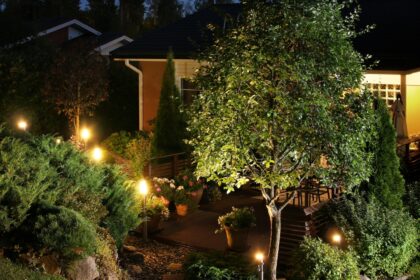When exploring a city, first impressions often come from its streetscapes, parks, and commercial properties. Beyond architecture and street signs, irrigation and landscaping play a significant role in shaping a city’s identity. They reveal the city’s priorities, climate considerations, and commitment to sustainability. For businesses, property managers, and urban planners, understanding these local trends is not just aesthetic it reflects the cultural and environmental story of the area.
The Role of Irrigation in Urban Identity
Efficient Water Management Speaks Volumes
Irrigation systems are more than a convenience they are a statement of how a city manages its natural resources. In cities with strict water conservation policies, well-planned commercial irrigation systems are common. These cities often feature drip irrigation, smart controllers, and rainwater harvesting systems on commercial landscapes. This demonstrates an awareness of environmental impact and resource efficiency.
Conversely, cities with abundant water resources may have more traditional spray irrigation systems that cover large commercial lawns or parks. Observing these choices gives insight into the city’s climate challenges, water policies, and how businesses adapt to local conditions.
Seasonal Adjustments Reflect Local Expertise
Cities with variable climates often adjust irrigation schedules seasonally. Commercial properties in these areas may implement seasonal watering strategies to protect turf, reduce runoff, and maintain aesthetic appeal. By studying how irrigation adapts to seasonal changes, one can infer how local landscaping companies address environmental fluctuations, demonstrating the city’s resilience and attention to detail.
Landscaping as a Reflection of Culture
Plant Selection Reveals Local Identity
The types of plants used in commercial landscaping tell a story about a city’s geography and culture. In warmer regions like Florida or Texas, drought-tolerant plants, native grasses, and ornamental palms dominate, signaling adaptation to heat and water scarcity. In contrast, cities in the Pacific Northwest often feature lush, moisture-loving greenery, highlighting a climate rich in rainfall and a focus on vibrant, green public spaces.
For commercial properties, plant selection goes beyond appearance it reflects the city’s investment in sustainable landscaping practices. Local landscaping experts often favor native or adaptive species to reduce water use and maintenance costs, offering insight into how businesses align with regional environmental values.
Design Styles Mirror Urban Priorities
Commercial landscaping design is a visual representation of city planning priorities. Modern minimalist designs with clean lines and functional layouts suggest a focus on efficiency and professionalism. In contrast, lush, ornamental landscapes with intricate patterns signal a community valuing aesthetics and public enjoyment. Observing these trends across commercial properties helps visitors, investors, and residents understand the city’s broader identity.
The Connection Between Local Irrigation and Landscaping
Collaboration Shapes Citywide Aesthetics
The integration of irrigation and landscaping highlights the collaboration between municipal planning and private commercial property management. Cities that emphasize uniform landscaping standards for commercial zones demonstrate a collective vision for public spaces. The combination of efficient irrigation and thoughtful plant selection ensures that commercial landscapes thrive while staying consistent with citywide goals.
Sustainability as a Marker of Civic Responsibility
In many American cities, commercial properties increasingly adopt sustainable irrigation and landscaping solutions. Rainwater capture, soil moisture sensors, and xeriscaping techniques reduce environmental impact while maintaining aesthetic standards. These efforts showcase the city’s identity as forward-thinking, environmentally responsible, and adaptable to climate challenges.
Why Observing Irrigation and Landscaping Near Me Matters
For business owners, investors, and urban developers, searching for irrigation and landscaping near me provides more than local service options. It offers a window into how commercial landscapes are maintained and managed in a particular city. By analyzing the techniques, plant choices, and irrigation technologies employed, stakeholders gain a deeper understanding of the city’s environmental policies, cultural preferences, and commercial priorities.
Additionally, strong local landscaping companies reflect a city’s commitment to professionalism and quality in urban management. They reveal the level of expertise available to maintain attractive, functional, and sustainable commercial landscapes.
Irrigation and landscaping are silent storytellers of a city’s identity. From plant selection and design style to water management strategies, they reveal environmental awareness, cultural values, and municipal priorities. For commercial properties, understanding these patterns is essential not just for aesthetic appeal, but for aligning business practices with local standards and sustainability goals.
When searching for irrigation and landscaping near me, take a moment to observe the local approaches. Each city tells its story through the way it nurtures its green spaces, reflecting a unique identity shaped by climate, culture, and community values.



